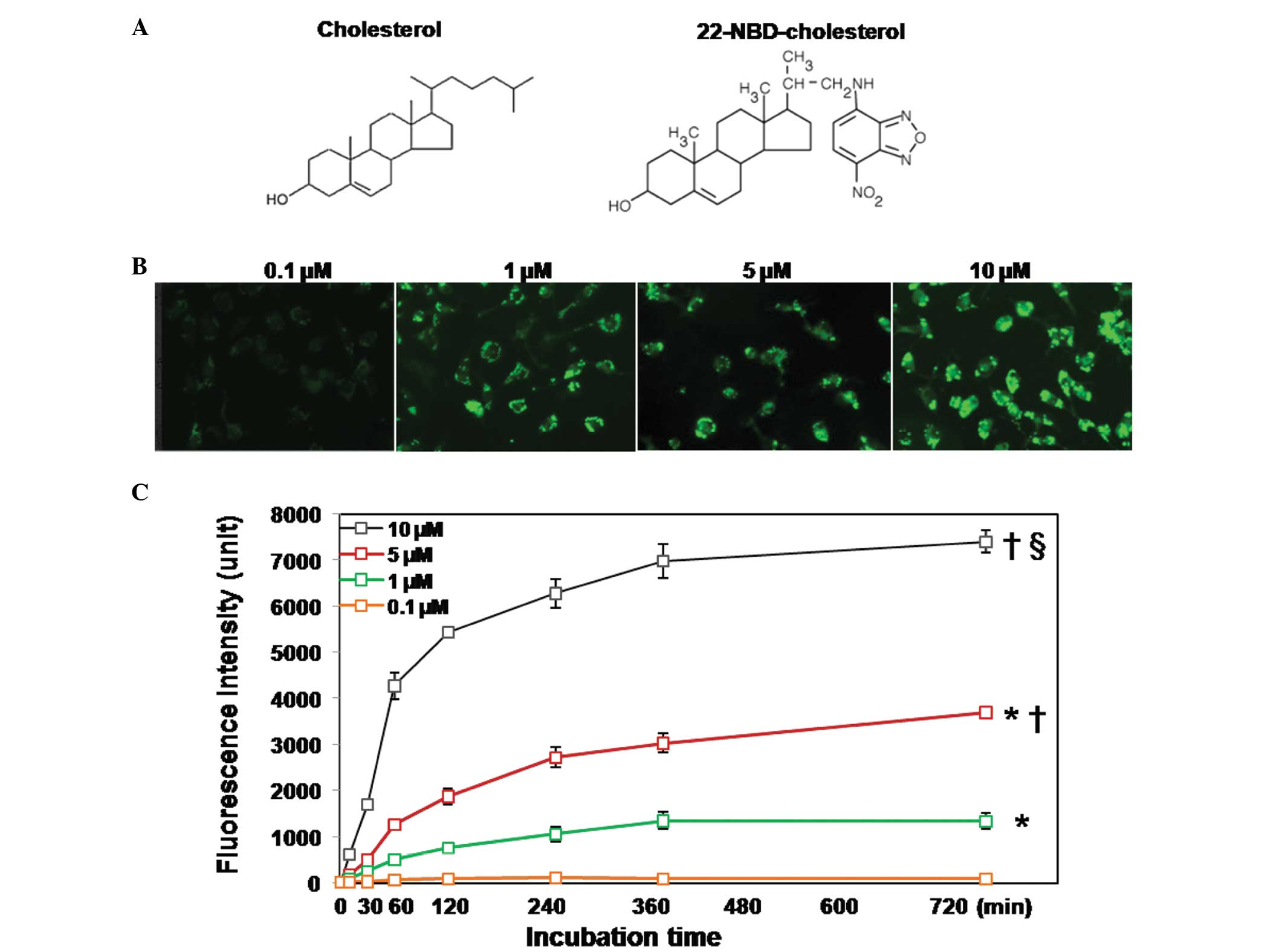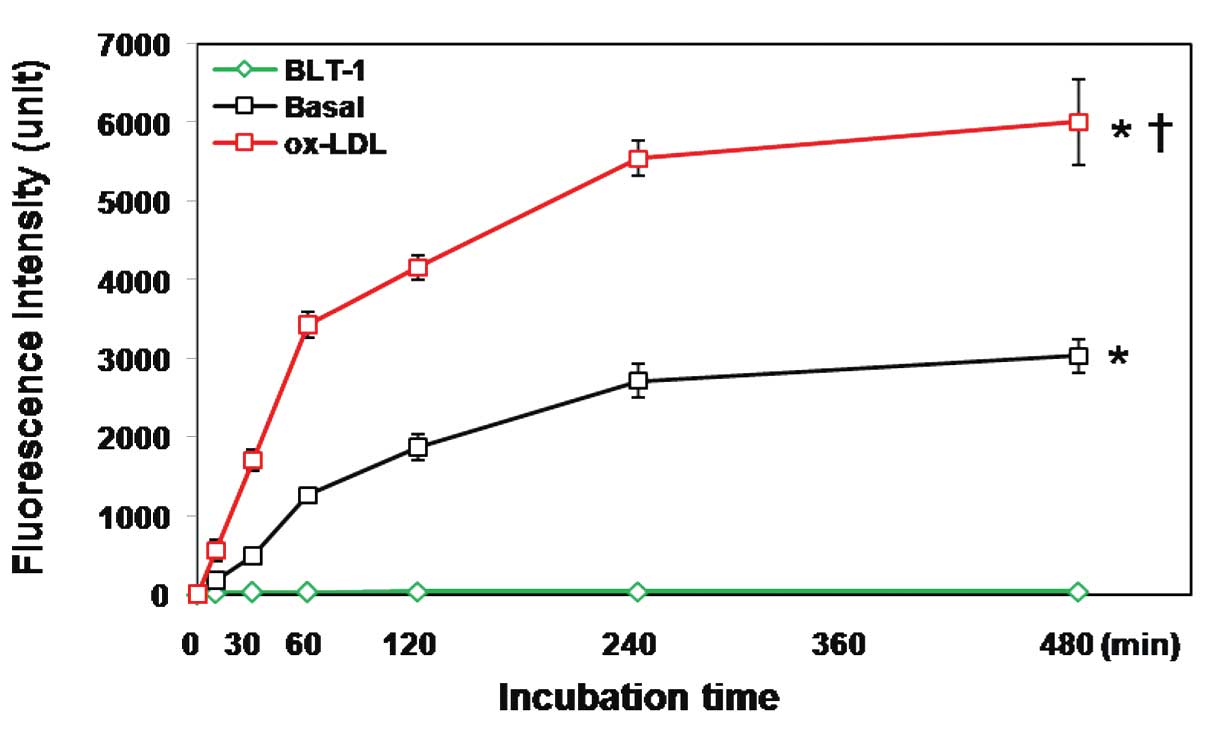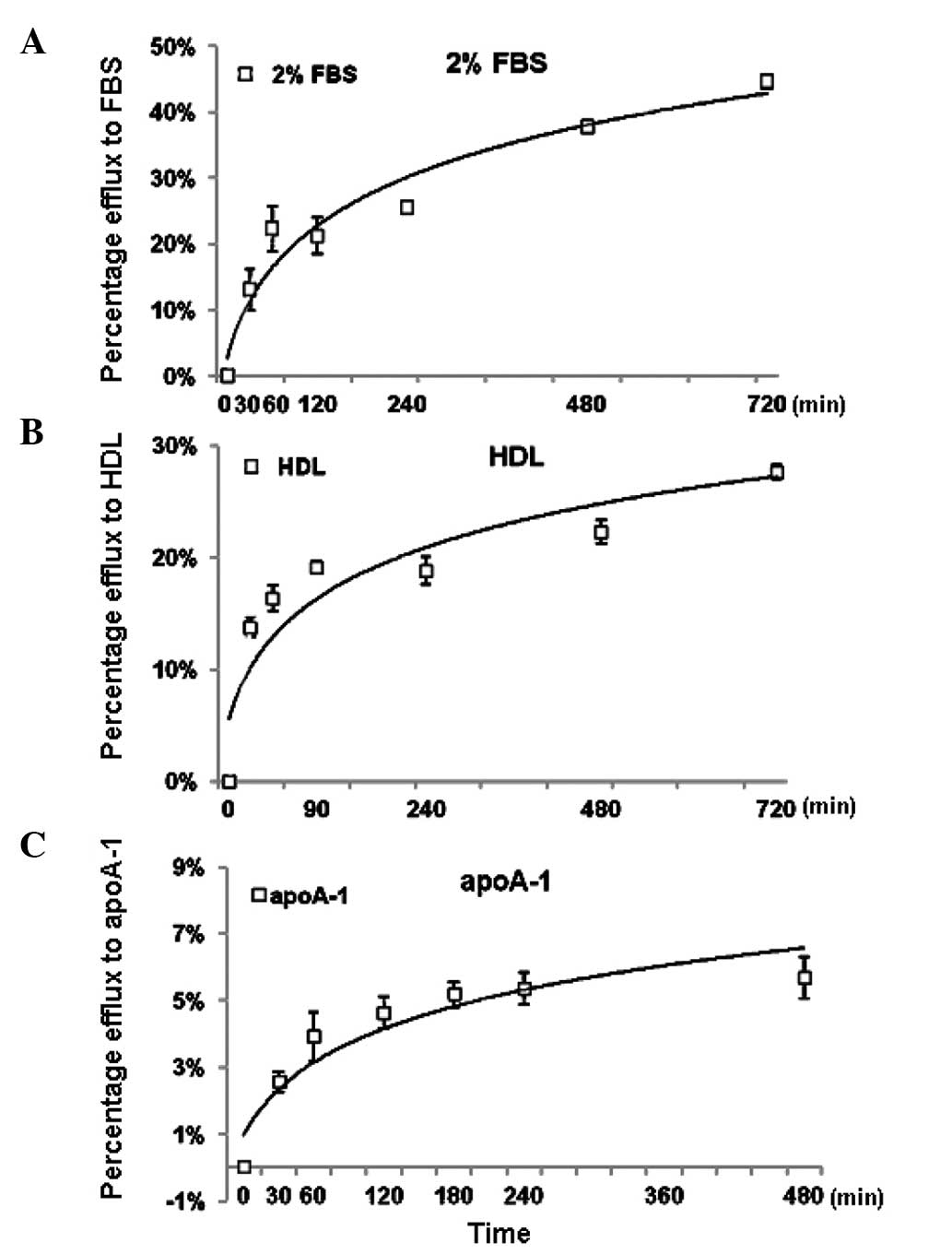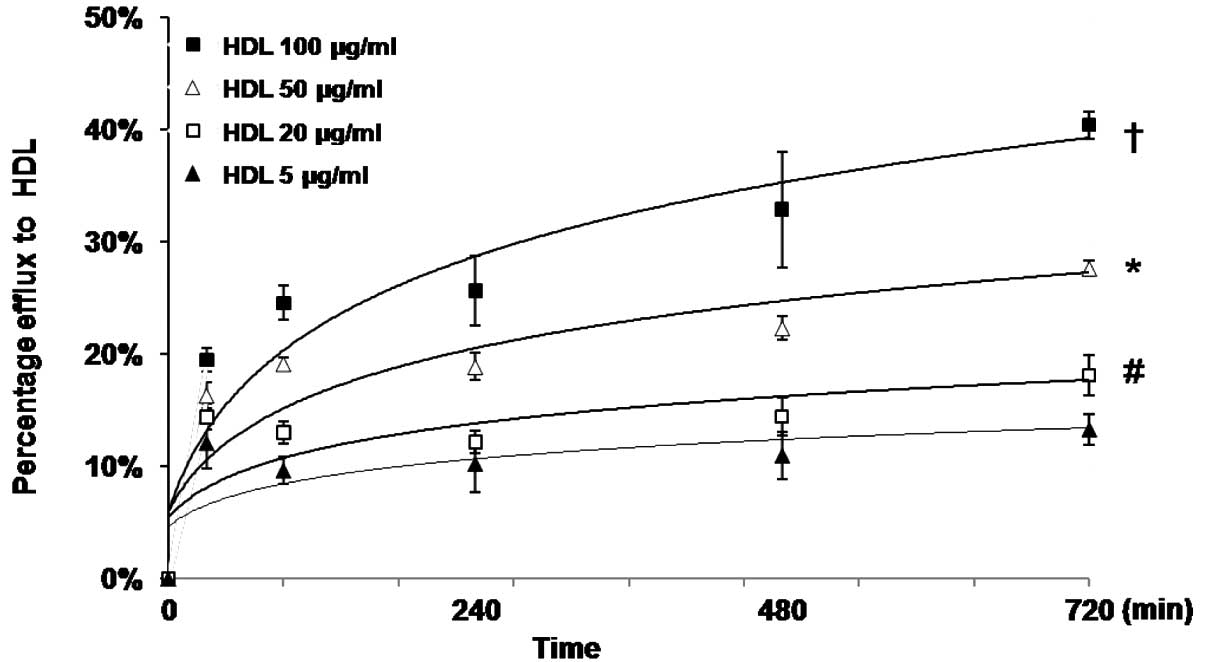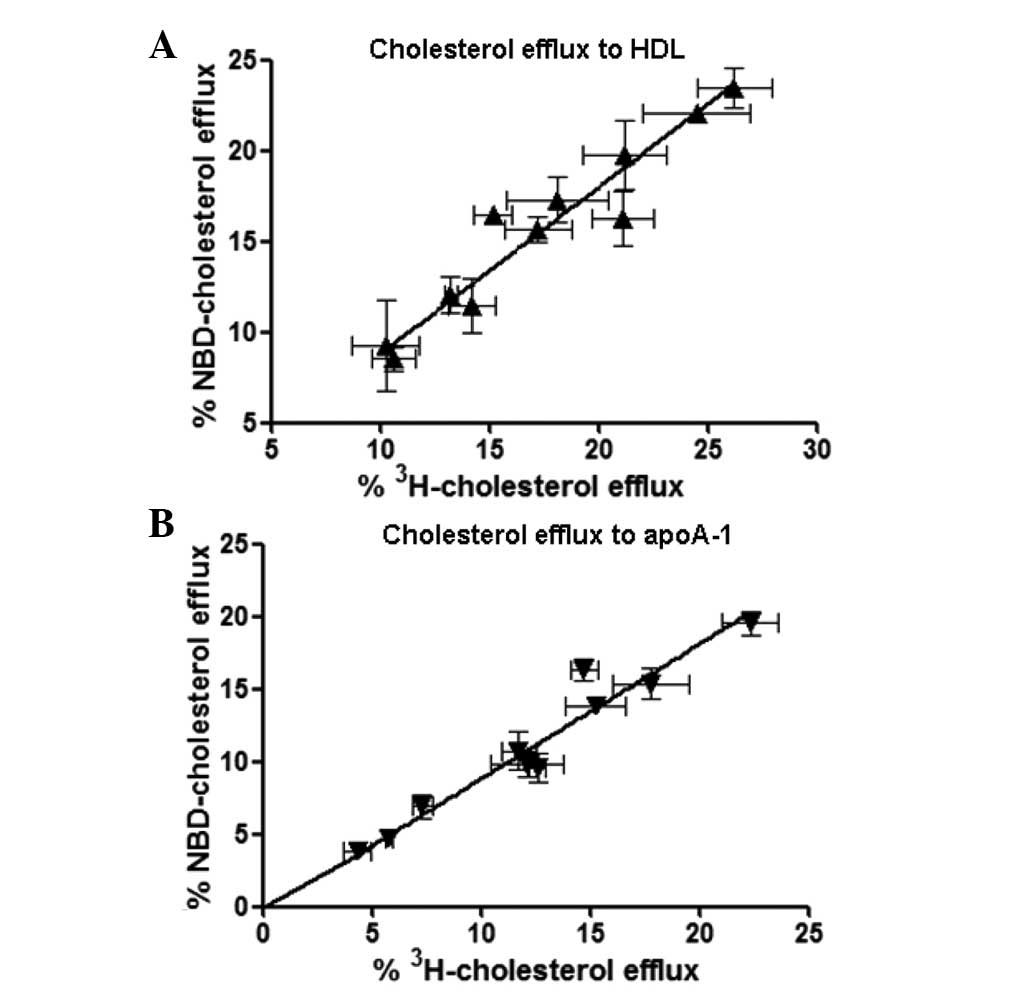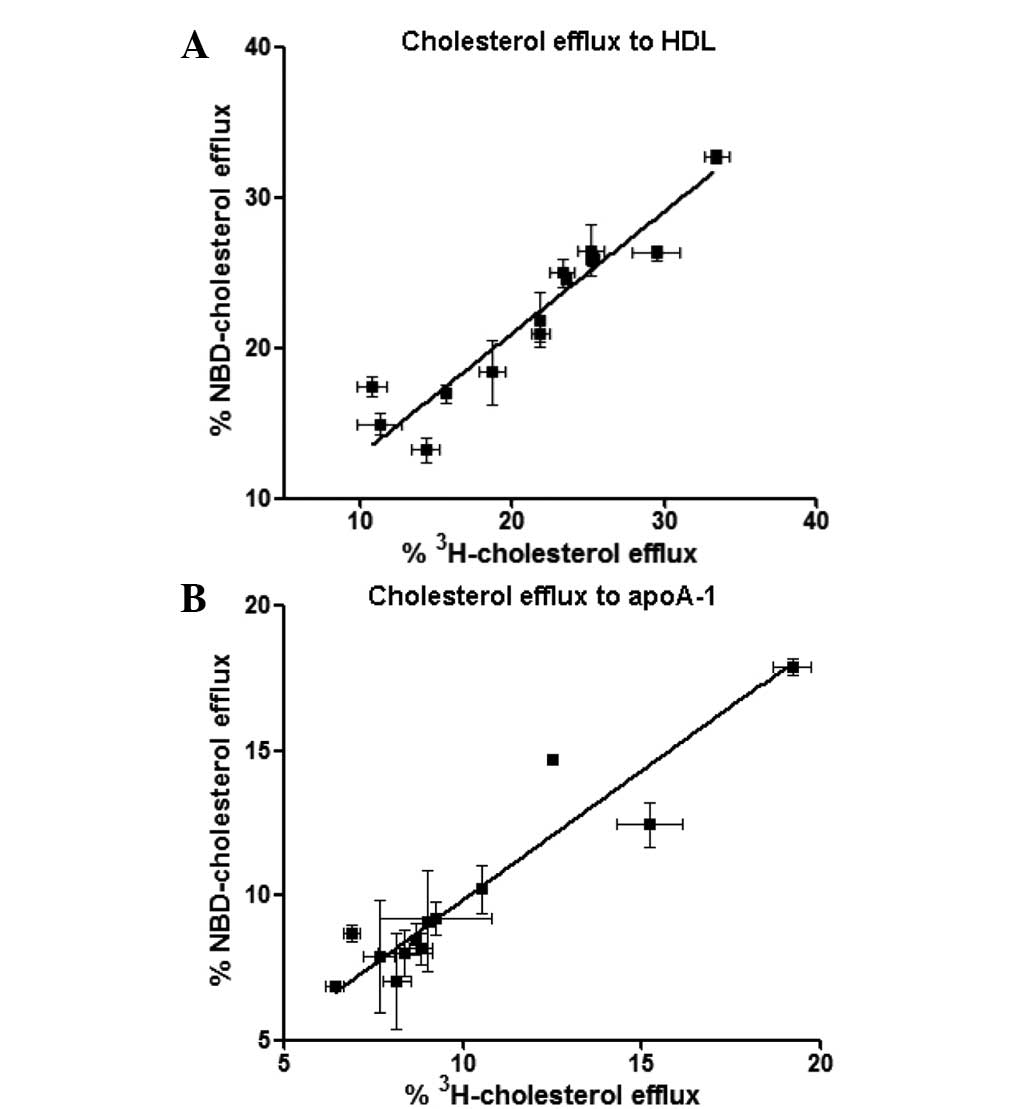|
1
|
Yusuf S, Reddy S, Ounpuu S and Anand S:
Global burden of cardiovascular diseases: Part I: General
considerations, the epidemiologic transition, risk factors and
impact of urbanization. Circulation. 104:2746–2753. 2001.
View Article : Google Scholar : PubMed/NCBI
|
|
2
|
Ross R: Atherosclerosis-an inflammatory
disease. N Engl J Med. 340:115–126. 1999. View Article : Google Scholar : PubMed/NCBI
|
|
3
|
Fielding CJ and Fielding PE: Cellular
cholesterol efflux. Biochim Biophys Acta. 1533:175–189. 2001.
View Article : Google Scholar : PubMed/NCBI
|
|
4
|
Tall AR, Costet P and Wang N: Regulation
and mechanisms of macrophage cholesterol efflux. J Clin Invest.
110:899–904. 2002. View Article : Google Scholar : PubMed/NCBI
|
|
5
|
Cuchel M and Rader DJ: Macrophage reverse
cholesterol transport: Key to the regression of atherosclerosis?
Circulation. 113:2548–2555. 2006. View Article : Google Scholar : PubMed/NCBI
|
|
6
|
Khera AV, Cuchel M, de la Llera-Moya M,
Rodrigues A, Burke MF, Jafri K, French BC, Phillips JA, Mucksavage
ML, Wilensky RL, et al: Cholesterol efflux capacity, high-density
lipoprotein function and atherosclerosis. N Engl J Med.
364:127–135. 2011. View Article : Google Scholar : PubMed/NCBI
|
|
7
|
Zhang J, Cai S, Peterson BR, Kris-Etherton
PM and Heuvel JP: Development of a cell-based, high-throughput
screening assay for cholesterol efflux using a fluorescent mimic of
cholesterol. Assay Drug Dev Technol. 9:136–146. 2011. View Article : Google Scholar :
|
|
8
|
Wustner D: Fluorescent sterols as tools in
membrane biophysics and cell biology. Chem Phys Lipids. 146:1–25.
2007. View Article : Google Scholar : PubMed/NCBI
|
|
9
|
Ramirez DM, Ogilvie WW and Johnston LJ:
NBD-cholesterol probes to track cholesterol distribution in model
membranes. Biochim Biophys Acta. 1798:558–568. 2010. View Article : Google Scholar
|
|
10
|
Storey SM, Atshaves BP, McIntosh AL,
Landrock KK, Martin GG, Huang H, Ross Payne H, Johnson JD,
Macfarlane RD, Kier AB and Schroeder F: Effect of sterol carrier
protein-2 gene ablation on HDL-mediated cholesterol efflux from
cultured primary mouse hepatocytes. Am J Physiol Gastrointest Liver
Physiol. 299:G244–G254. 2010. View Article : Google Scholar : PubMed/NCBI
|
|
11
|
Sankaranarayanan S, Kellner-Weibel G, de
la Llera-Moya M, Phillips MC, Asztalos BF, Bittman R and Rothblat
GH: A sensitive assay for ABCA1-mediated cholesterol efflux using
BODIPY-cholesterol. J Lipid Res. 52:2332–2340. 2011. View Article : Google Scholar : PubMed/NCBI
|
|
12
|
Tsuchiya S, Yamabe M, Yamaguchi Y,
Kobayashi Y, Konno T and Tada K: Establishment and characterization
of a human acute monocytic leukemia cell line (THP-1). Int J
Cancer. 26:171–176. 1980. View Article : Google Scholar : PubMed/NCBI
|
|
13
|
Tsuchiya S, Kobayashi Y, Goto Y, Okumura
H, Nakae S, Konno T and Tada K: Induction of maturation in cultured
human monocytic leukemia cells by a phorbol diester. Cancer Res.
42:1530–1536. 1982.PubMed/NCBI
|
|
14
|
Liu XH, Xiao J, Mo ZC, Yin K, Jiang J, Cui
LB, Tan CZ, Tang YL, Liao DF and Tang CK: Contribution of D4-F to
ABCA1 expression and cholesterol efflux in THP-1 macrophage-derived
foam cells. J Cardiovasc Pharmacol. 56:309–319. 2010. View Article : Google Scholar : PubMed/NCBI
|
|
15
|
Larrede S, Quinn CM, Jessup W, Frisdal E,
Olivier M, Hsieh V, Kim MJ, Van Eck M, Couvert P, Carrie A, et al:
Stimulation of cholesterol efflux by LXR agonists in
cholesterol-loaded human macrophages is ABCA1-dependent but
ABCG1-independent. Arterioscler Thromb Vasc Biol. 29:1930–1936.
2009. View Article : Google Scholar : PubMed/NCBI
|
|
16
|
Patel S, Drew BG, Nakhla S, Duffy SJ,
Murphy AJ, Barter PJ, Rye KA, Chin-Dusting J, Hoang A, Sviridov D,
et al: Reconstituted high-density lipoprotein increases plasma
high-density lipoprotein anti-inflammatory properties and
cholesterol efflux capacity in patients with type 2 diabetes. J Am
Coll Cardiol. 53:962–971. 2009. View Article : Google Scholar : PubMed/NCBI
|
|
17
|
de Almeida MC, Silva AC, Barral A and
Barral Netto M: A simple method for human peripheral blood monocyte
isolation. Mem Inst Oswaldo Cruz. 95:221–223. 2000. View Article : Google Scholar : PubMed/NCBI
|
|
18
|
Xu Y, Wang W, Zhang L, Qi LP, Li LY, Chen
LF, Fang Q, Dang AM and Yan XW: A polymorphism in the ABCG1
promoter is functionally associated with coronary artery disease in
a Chinese Han population. Atherosclerosis. 219:648–654. 2011.
View Article : Google Scholar : PubMed/NCBI
|
|
19
|
Fan J, Rone MB and Papadopoulos V:
Translocator protein 2 is involved in cholesterol redistribution
during erythropoiesis. J Biol Chem. 284:30484–30497. 2009.
View Article : Google Scholar : PubMed/NCBI
|
|
20
|
Sasaki H and White SH: A novel fluorescent
probe that senses the physical state of lipid bilayers. Biophys J.
96:4631–4641. 2009. View Article : Google Scholar : PubMed/NCBI
|
|
21
|
Frolov A, Petrescu A, Atshaves BP, So PT,
Gratton E, Serrero G and Schroeder F: High density
lipoprotein-mediated cholesterol uptake and targeting to lipid
droplets in intact L-cell fibroblasts. A single- and multiphoton
fluorescence approach. J Biol Chem. 275:12769–12780. 2000.
View Article : Google Scholar : PubMed/NCBI
|
|
22
|
Sengupta B, Narasimhulu CA and
Parthasarathy S: Novel technique for generating macrophage foam
cells for in vitro reverse cholesterol transport studies. J Lipid
Res. 54:3358–3372. 2013. View Article : Google Scholar : PubMed/NCBI
|
|
23
|
Ohashi R, Mu H, Wang X, Yao Q and Chen C:
Reverse cholesterol transport and cholesterol efflux in
atherosclerosis. QJM. 98:845–856. 2005. View Article : Google Scholar : PubMed/NCBI
|
|
24
|
Zhang J, Cai S, Peterson BR, Kris-Etherton
PM and Heuvel JP: Development of a cell-based, high-throughput
screening assay for cholesterol efflux using a fluorescent mimic of
cholesterol. Assay Drug Dev Technol. 9:136–146. 2011. View Article : Google Scholar :
|
|
25
|
Ohashi M, Murata M and Ohnishi S: A novel
fluorescence method to monitor the lysosomal disintegration of low
density lipoprotein. Eur J Cell Biol. 59:116–126. 1992.PubMed/NCBI
|
|
26
|
Adams MR, Konaniah E, Cash JG and Hui DY:
Use of NBD-cholesterol to identify a minor but NPC1L1-independent
cholesterol absorption pathway in mouse intestine. Am J Physiol
Gastrointest Liver Physiol. 300:G164–G169. 2011. View Article : Google Scholar :
|
|
27
|
Takahashi M, Murate M, Fukuda M, Sato SB,
Ohta A and Kobayashi T: Cholesterol controls lipid endocytosis
through Rab11. Mol Biol Cell. 18:2667–2677. 2007. View Article : Google Scholar : PubMed/NCBI
|
|
28
|
Portioli Silva EP, Peres CM, Roberto
Mendonca J and Curi R: NBD-cholesterol incorporation by rat
macrophages and lymphocytes: A process dependent on the activation
state of the cells. Cell Biochem Funct. 22:23–28. 2004. View Article : Google Scholar
|
|
29
|
Nagy L, Tontonoz P, Alvarez JG, Chen H and
Evans RM: Oxidized LDL regulates macrophage gene expression through
ligand activation of PPARgamma. Cell. 93:229–240. 1998. View Article : Google Scholar : PubMed/NCBI
|
|
30
|
Boullier A, Bird DA, Chang MK, Dennis EA,
Friedman P, Gillotre-Taylor K, Hörkkö S, Palinski W, Quehenberger
O, Shaw P, et al: Scavenger receptors, oxidized LDL and
atherosclerosis. Ann N Y Acad Sci. 947:214–222; discussion 222–223.
2001. View Article : Google Scholar
|
|
31
|
Yvan-Charvet L, Ranalletta M, Wang N, Han
S, Terasaka N, Li R, Welch C and Tall AR: Combined deficiency of
ABCA1 and ABCG1 promotes foam cell accumulation and accelerates
atherosclerosis in mice. J Clin Invest. 117:3900–3908.
2007.PubMed/NCBI
|
|
32
|
Adorni MP, Zimetti F, Billheimer JT, Wang
N, Rader DJ, Phillips MC and Rothblat GH: The roles of different
pathways in the release of cholesterol from macrophages. J Lipid
Res. 48:2453–2462. 2007. View Article : Google Scholar : PubMed/NCBI
|
|
33
|
Wang X, Collins HL, Ranalletta M, Fuki IV,
Billheimer JT, Rothblat GH, Tall AR and Rader DJ: Macrophage ABCA1
and ABCG1, but not SR-BI, promote macrophage reverse cholesterol
transport in vivo. J Clin Invest. 117:2216–2224. 2007. View Article : Google Scholar : PubMed/NCBI
|
|
34
|
Wang N, Lan D, Chen W, Matsuura F and Tall
AR: ATP-binding cassette transporters G1 and G4 mediate cellular
cholesterol efflux to high-density lipoproteins. Proc Natl Acad Sci
USA. 101:9774–9779. 2004. View Article : Google Scholar : PubMed/NCBI
|
|
35
|
Tall AR, Yvan-Charvet L, Terasaka N,
Pagler T and Wang N: HDL, ABC transporters and cholesterol efflux:
Implications for the treatment of atherosclerosis. Cell Metab.
7:365–375. 2008. View Article : Google Scholar : PubMed/NCBI
|
|
36
|
Yvan-Charvet L, Wang N and Tall AR: Role
Of HDL, ABCA1 and ABCG1 transporters in cholesterol efflux and
immune responses. Arterioscler Thromb Vasc Biol. 30:139–143. 2010.
View Article : Google Scholar :
|















